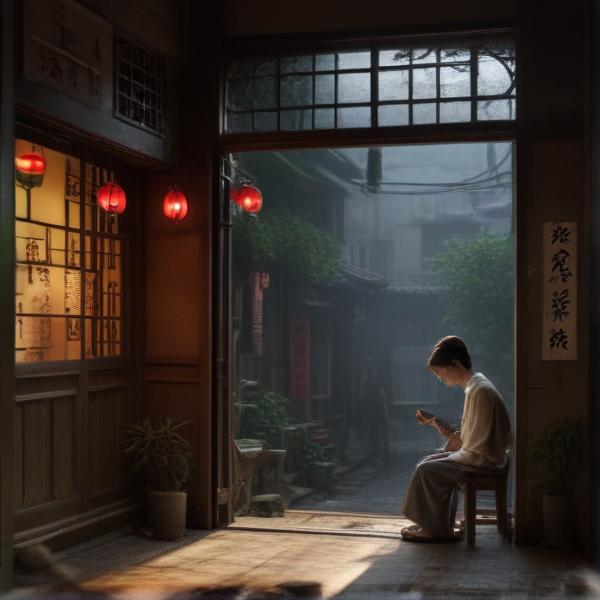基本信息 (Basic Information)
含义与用法 (Meanings & Usage)
中文核心释义 (Core Chinese Meaning): 雕刻玉石,比喻雕琢、打磨、修饰。
英文核心释义 (Core English Meaning): to carve or polish jade; to polish, refine, or hone something (figuratively).
象形意义 / 为何这么写 (Pictographic Meaning / Writing Rationale)
文言文释义 (Classical Chinese Meaning)
与现代意义相近,主要指雕琢玉石,引申为修饰与完善。Similar to modern meaning; primarily refers to carving or polishing jade and, by extension, to refining or perfecting something.
深入学习 (In-depth Study)
字源故事 (Origin Story)
字形演变 (Character Evolution)
常用词语和例句 (Common Words & Examples)
琢磨 (to ponder; to think over; to polish (literary works, skills, etc.))
他一直在琢磨这个问题。
Eng: He has been pondering this problem.
雕琢 (to carve and polish; to refine (often used for writing, art, etc.))
他的文章经过反复雕琢,十分精彩。
Eng: His article became brilliant after repeated refinement.
相关成语 (Related Idioms)
琢玉成器
Meaning: to carve jade into a valuable object; to turn raw talent into real ability through hard work
多语言翻译 (核心释义) (Translations (Core Meaning))
- French: sculpter, polir (jade); polir, affiner
- German: Jadeschleifen, polieren; verfeinern
- Spanish: tallar, pulir (jade); perfeccionar
- Italian: scolpire, lucidare (giada); affinare
- Portuguese: esculpir, polir (jade); aperfeiçoar
- Russian: гравировать, шлифовать (нефрит); оттачивать
- Arabic: نحت أو صقل (اليشم)؛ تهذيب أو صقل
- Persian: تراشیدن، صیقل دادن (یشم)؛ صیقل دادن
- Dutch: jade snijden, polijsten; verfijnen
- Polish: rzeźbić, polerować (jadeit); udoskonalać
- Vietnamese: chạm khắc, đánh bóng (ngọc); mài giũa
- Ukrainian: різьбити, полірувати (нефрит); вдосконалювати
视频学习资源 (Video Learning Resources)
通过以下链接在热门视频网站搜索 "琢" 的更多讲解:
Search for more explanations of "琢" on popular video sites:
- 在 Bilibili.com 搜索 "琢 字源 说文解字" (Search on Bilibili)
- 在 YouTube.com 搜索 "琢 character origin etymology" (Search on YouTube)
网络参考 (Web References for "琢") ()
网络内容摘要 (Web Content Summary):
核心含义:“琢”字的本义是雕刻、加工玉石,指对原石进行修饰和打磨,使其更加精美。 Core meaning: The character "琢" originally refers to carving or working on jade, meaning to shape and refine a rough stone to make it more beautiful.
象形起源与字形演变:“琢”字出现在甲骨文和金文中。从字形来看,左边“王”意为玉,右边“豖”作为声旁。两部分结合,表达“用工具加工玉石”。 Pictographic origin & evolution: The character appears in oracle bone script and bronze inscriptions. The left part “王” means jade, and the right part “豖” serves as the phonetic component. Together, they convey the meaning of working jade with tools.
- 常用词语/成语:如“雕琢”(refine/polish)、“琢磨”(think over carefully)常见于文学和日常表达。 Common phrases/idioms: For example, "雕琢" (to refine/polish), "琢磨" (to ponder/think over) are often used in literature and daily speech.
- 易混淆点:琢与“镯”发音相近,但“镯”指手镯,意思不同。 Easily confused: "琢" is pronounced similarly to "镯" (bracelet), but the meanings are different.
文化意义:“琢”在中华文化中常用来比喻对品德、学识的磨炼,如“玉不琢,不成器”。 Cultural significance: “琢” is often used metaphorically in Chinese culture to describe the honing of moral character or knowledge, such as in the saying, “Jade must be carved to become useful.”
【豖,琢】的甲骨文金文篆文字形演变含义 - 甲骨文研究网 甲骨文密码字典 在线甲骨文字典研究 - 甲骨文研究网 甲骨文密码字典 在线甲骨文字典 ...
汉字的来历和演变豖:(甲骨文 ) 琢:(說文解字 篆體字)甲骨文密码【甲骨密码】【其他解读】豖,是 ... 日期:2023-03-19 来源 ... 汉字甲骨文破译字典》一书中,破解的古诗、竹简等古文作品收录在《新编甲骨文破译案例解析 ...
琢字形演变字源_汉字「琢」_琢的甲骨文_琢的金文_金文编_甲骨文编
琢字形演变字源,汉字「琢」,琢的甲骨文,琢的金文,金文编,甲骨文编 明清实录 | 二十四史 | 四库全书 | 古今图书集成 | 历史人物 | 说文解字 | 成语词典 | 甲骨文合集 | 殷周金文集成 | 象形字典 | 十三经索引 | 字体转换器 | 篆书识别 | 近义反义词 | 对联大全 | 家谱 ...
更多图片 (琢 More Images) ()
